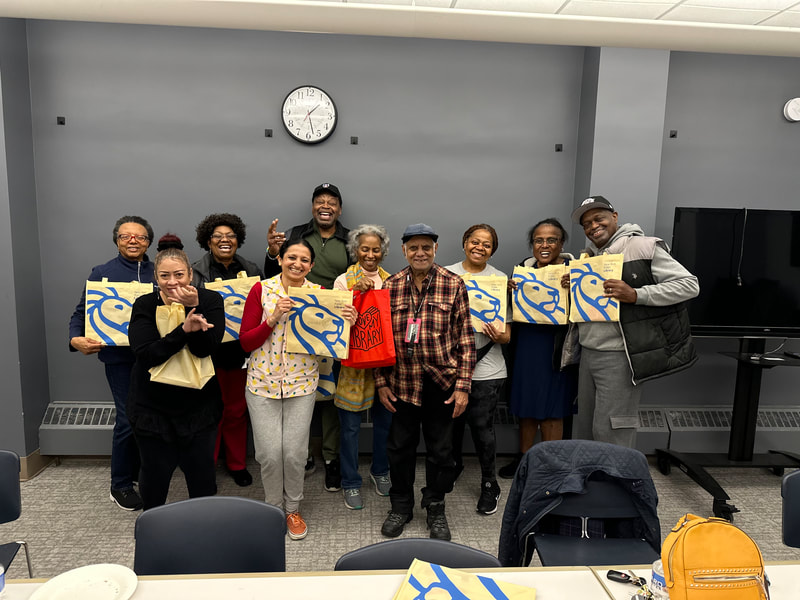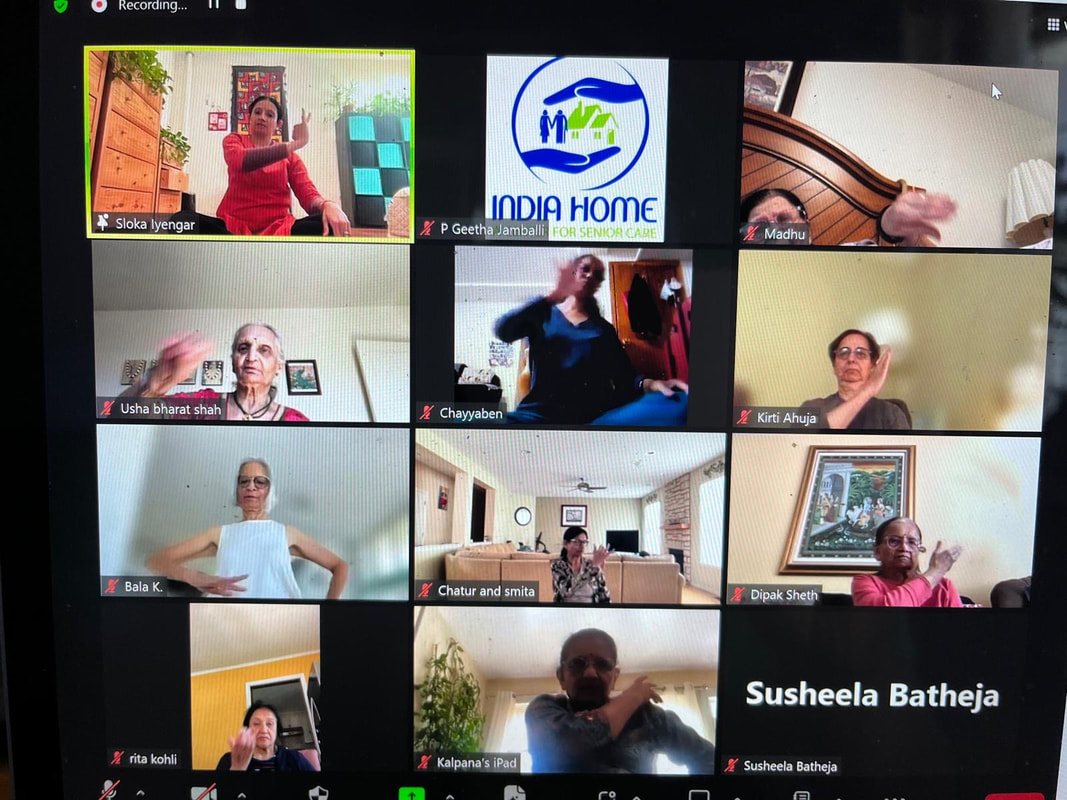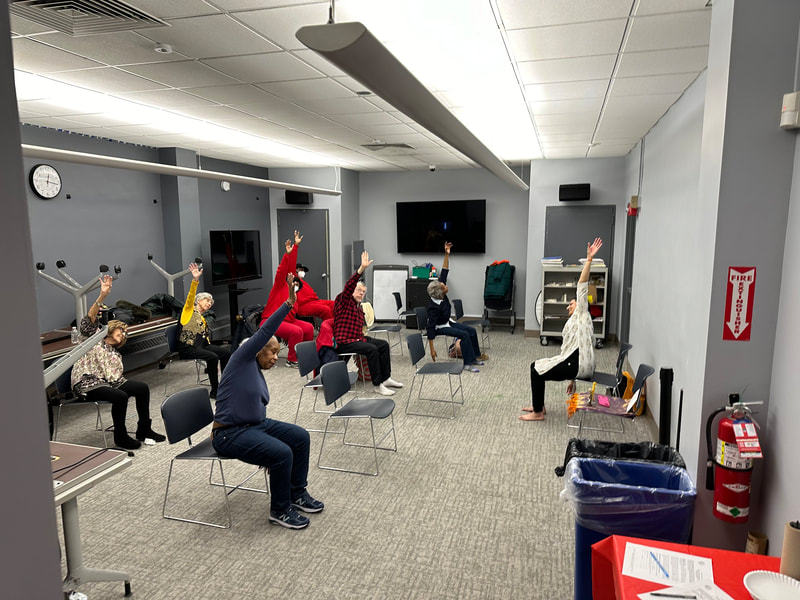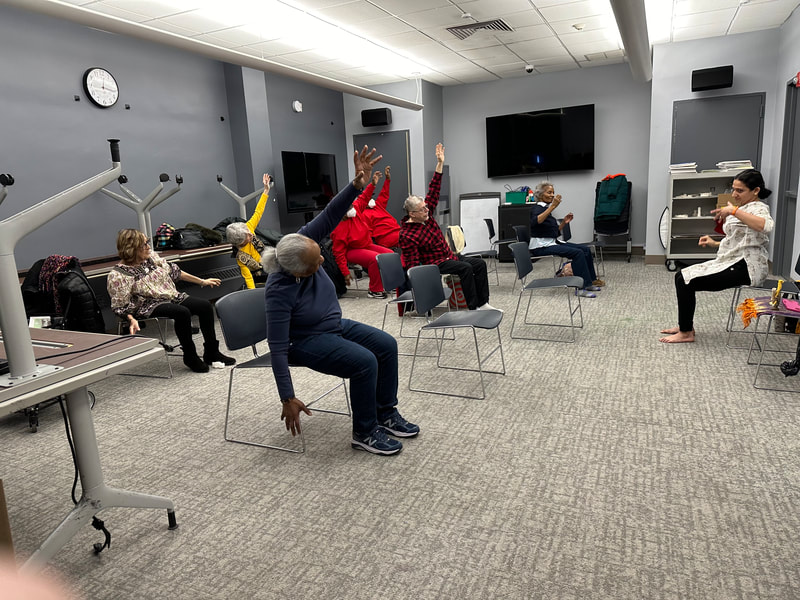Manuscript on the use of hastas in creative aging published in The Journal of Medical Humanities!6/24/2024 Manuscript on the use of hastas in creative aging published in The Journal of Medical Humanities!I am so excited to share that my article "The Use of Hand Gestures (Hastas) in Bharatanatyam for Creative Aging" has been published in the The Journal of Medical Humanities! The link is here.
0 Comments
Finishing up creative aging sessions at Baychester NYPLIn Spring of 2024, I worked at the Baychester NYPL to bring creative aging sessions to patrons. Below are a few images from one session (top) and a culminating performance (bottom) that was attended by over 80 individuals from the Co-op city community. Image credit: Logan Hughes Series of low impact Bharatanatyam sessions at India Home (2)I am so excited to be back at India Home to conduct several Bharatanatyam sessions. The mission of India home is to " to improve the quality of life of South Asian older adults through culturally appropriate social services".
A few videos of the virtual sessions are below (Left: Namaskara; Right: Mooshika Vahana). Video credit: Geetha Jamballi Series of low impact Bharatanatyam at India Home (1)I am so excited to be back at India Home to conduct several Bharatanatyam sessions. The mission of India home is to " to improve the quality of life of South Asian older adults through culturally appropriate social services". A few videos of the virtual sessions are below (Left: Namaskara; Right: Mooshika Vahana). Video credit: Geetha Jamballi
Creative aging sessions at the Baychester branch of NYPLI am working with the Baychester NYPL to bring creative aging sessions to patrons in spring of 2024. Below are a few images from March 25, 2024.
Image credit: Logan Hughes Masterclass as part of Dances for a Variable PopulationMaterclass at Dances for a Variable Population In March 2024, I presented a masterclass as part of Dances for a Variable Population series. "DVP's lively, fun and free programs for adults, low cost classes and performances with beautifully crafted choreography extends and improves the quality of life." I shared my wrok at the William Hodson Senior Center in the Bronx. Below are a few videos (credit: Andrea Gorrín)
Presenting "Bharatanaytam for Creative Aging" at the Humanistic Medicine Program at NYU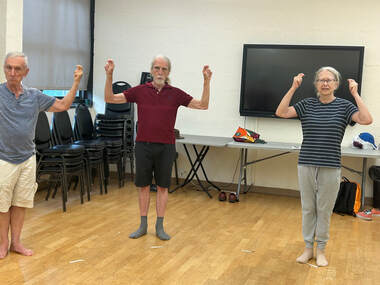 Students at the YM&YWHA of Washington Heights and Inwood demonstrating a hand gesture (hasta) Students at the YM&YWHA of Washington Heights and Inwood demonstrating a hand gesture (hasta) On March 5, 2024, my students from the YM&YWHA of Washington Heights and Inwood will be presenting at lecture/demonstration at the Humanistic Medicine Program at NYU. This session will explore the intersections between medicine and the humanities, arts, and social sciences, and engage the NYU community in conversations about the social elements and implications of medicine and health. This session will provide an opportunity for medical students to experience a style of dance and understand how it connects to communication, empathy, cultural humility, and social justice. My session will be unique in its incorporation of some of my senior students. Thanks to Lower Manhattan Cultural Council and its Creative Learning grant for funding part of this work. Building Connections through Bharatanatyam for Creative Aging (2) 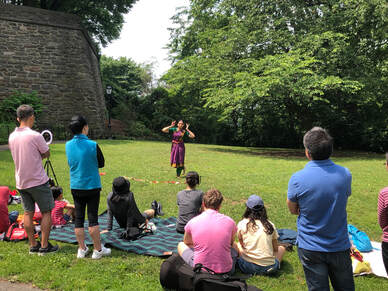 At Abby's Lawn in summer 2023 for a project with flutist Zara Lawler, funded by Partnerships for Parks. At Abby's Lawn in summer 2023 for a project with flutist Zara Lawler, funded by Partnerships for Parks. In the last post, we saw the rise in rates of loneliness and social isolation in older adults, and that it may be associated with chronic mental and physical health issues. In this post, I will propose the use of aspects of Bharatanatyam for creative aging as a unique and specific way to address this issue.
Literature cited:
Building Connections through Bharatanatyam for Creative Aging (1)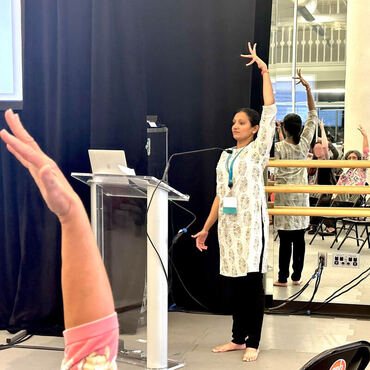 Presenting my work on Bharatanatyam and creative aging at NOAHCON 23 in Cleveland, Ohio. PC: Sheila Fontanive Presenting my work on Bharatanatyam and creative aging at NOAHCON 23 in Cleveland, Ohio. PC: Sheila Fontanive Older adults in the US and worldwide are facing enormous levels of isolation and loneliness. Loneliness is defined as the "feeling of being alone" irrespective of the amount of social contacts one has. Social isolation is defined as the overt lack of social connections [1]. As we can see the two are related, but not entirely the same. Research on the tangible impacts of loneliness on the brain are underway, but it is clear that loneliness in older adults may be linked to higher rates of conditions such as heart disease, high blood pressure, weakened immunity, depression etc. In fact, loneliness and isolation have been suggested to be instigators for a host of physical and mental conditions [2]. These facts are stark and paint a rather bleak picture. So, what can we do? The role of the arts in promoting social cohesion has been suggested. Specifically, it has been shown that "creative placemaking", the process of using arts to shape the physical and social characteristics of a place can help achieve social cohesion and promote wellbeing [3]. In the next post, I will talk about my work using Bharatanatyam for creative aging, and all the ways in which this traditional Indian dance form can promote connectivity and alleviate isolation and loneliness. Literature cited:
The Body Poetic for Arts for the Aging (5)On December 8, 2023, as a teaching artist for Arts for the Aging, certified poetry therapist Lauren Mazow Boyle and I presented a series of workshops entitled "The Body Poetic: Exploration through Indian Dance and Poetry".
We explored Rabindranath Tagore's poem "And in wonder and amazement I sing'. Below is a small excerpt of the poetry that participants made: A Mantra to Renew Your Spirit Communing with the Universe "Sleepy Peaceful Walking in the woods with spring flowers Why aren’t you here all year? Remember this moment Feel the squishy ground meeting your feet Feel it Feel it again And again Inhale the fragrance of this walk in the woods See, feel, and touch a beautiful world Expanding one moment to eternity." |
AuthorMy name is Sloka. I am a neuroscientist and dancer; you can find more about me here. Archives
June 2024
|





